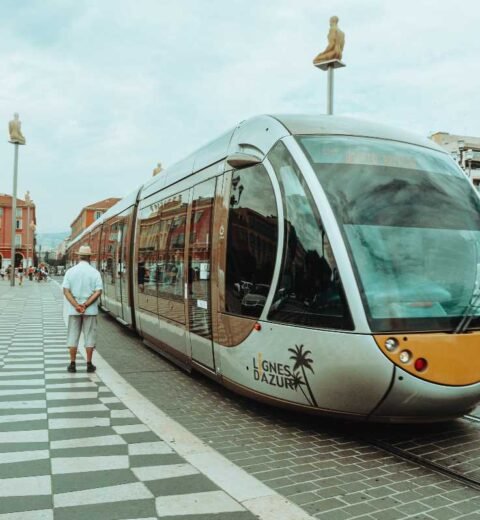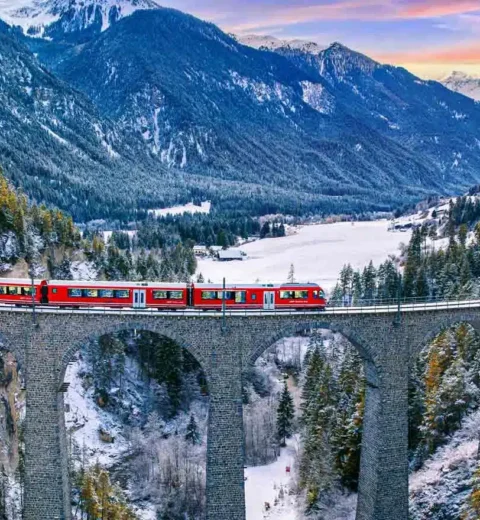Planning a trip to Italy can feel overwhelming with its rich history, stunning landscapes, and endless attractions. But with the right approach, you can craft a memorable journey that fits your style and budget.
This guide offers practical tips, budget considerations, and a sample itinerary to make your Italy travel planning seamless and stress-free.
Why Visit Italy?
Italy is a dream destination, blending ancient ruins, Renaissance art, world-class cuisine, and breathtaking scenery. From the Colosseum in Rome to the canals of Venice, the rolling hills of Tuscany to the dramatic Amalfi Coast, Italy offers something for every traveler—whether you’re a history buff, foodie, or nature lover.
Planning Tips for Your Italy Trip
1. Choose the Right Time to Visit
- Spring (April–June) and Fall (September–October): Ideal for pleasant weather, fewer crowds, and lower prices compared to peak summer months.
- Summer (July–August): Hot and crowded, especially in tourist hotspots like Rome and Florence. Book accommodations early.
- Winter (November–March): Cooler and quieter, perfect for budget travelers and those wanting to explore cities without crowds. Note that some coastal areas may have limited services.
2. Decide on Your Must-See Destinations
Italy’s regions each have a unique flavor:
- Rome: Iconic landmarks like the Colosseum, Pantheon, and Vatican City.
- Florence: The cradle of the Renaissance, with the Uffizi Gallery and Duomo.
- Venice: Romantic canals, St. Mark’s Square, and historic charm.
- Amalfi Coast: Stunning coastal towns like Positano and Amalfi.
- Tuscany: Rolling hills, vineyards, and medieval towns like Siena and San Gimignano.
- Cinque Terre: Colorful seaside villages perfect for hiking and photography.
Prioritize based on your interests and time. A 7–10 day trip can comfortably cover 2–3 regions.
3. Plan Your Transportation
- Trains: Italy’s high-speed trains (Frecciarossa, Italo) are efficient for connecting major cities like Rome, Florence, and Venice. Book tickets in advance on Trenitalia or Italo for discounts.
- Flights: Budget airlines like Ryanair and EasyJet offer cheap flights between cities, but factor in airport transfer times.
- Car Rentals: Ideal for exploring rural areas like Tuscany or Puglia, but parking and city driving can be challenging.
- Public Transport: Buses and ferries are great for coastal areas like the Amalfi Coast or Cinque Terre.
4. Book Accommodations Early
- Hotels: Range from luxury to budget-friendly. Boutique hotels or family-run guesthouses offer authentic experiences.
- Airbnb: Great for longer stays or groups, especially in rural areas.
- Hostels: Perfect for solo travelers or those on a tight budget.
- Tip: Book 3–6 months in advance for peak season to secure deals and availability.
5. Learn Basic Italian Phrases
While many Italians in tourist areas speak English, learning phrases like “Buongiorno” (Good morning), “Grazie” (Thank you), or “Quanto costa?” (How much?) enhances your experience and shows respect.
6. Pack Smart
- Comfortable walking shoes for cobblestone streets.
- Lightweight clothing for summer; layers for spring/fall.
- A scarf or shawl for visiting churches (shoulders and knees must be covered).
- A universal power adapter for Italy’s Type F and L outlets.
Budgeting for Your Italy Trip
Estimated Daily Costs (Per Person)
- Budget Traveler: €50–€100 (hostels, street food, public transport, free attractions).
- Mid-Range Traveler: €100–€200 (3-star hotels, casual restaurants, some guided tours).
- Luxury Traveler: €200+ (4–5 star hotels, fine dining, private tours).
Cost-Saving Tips
- Eat Like a Local: Grab pizza or panini from street vendors (€3–€8) instead of sit-down restaurants. Try aperitivo bars for drinks with free snacks.
- City Passes: Rome’s Roma Pass or Florence’s Firenze Card offer discounts on attractions and transport.
- Free Attractions: Many churches (e.g., St. Peter’s Basilica) and public squares are free to visit.
- Travel Off-Peak: Save on flights and accommodations by avoiding July–August.
Sample Budget Breakdown (7-Day Trip for Two, Mid-Range)
- Flights: €400–€800 (round-trip from Europe; varies from other regions).
- Accommodations: €700–€1,200 (3-star hotels or Airbnb).
- Food & Drinks: €350–€600 (mix of casual dining and street food).
- Transport: €150–€300 (trains and local buses).
- Attractions: €200–€400 (museum tickets, guided tours).
- Total: €1,800–€3,300 for two.
Sample 7-Day Italy Itinerary
Day 1–3: Rome
- Day 1: Explore the Colosseum, Roman Forum, and Palatine Hill. Evening stroll through Piazza Navona.
- Day 2: Visit Vatican City (St. Peter’s Basilica, Sistine Chapel). Enjoy dinner in Trastevere.
- Day 3: See the Pantheon, Trevi Fountain, and Spanish Steps. Optional: Day trip to Ostia Antica or Tivoli.
Day 4–5: Florence
- Day 4: Take a morning train to Florence (1.5 hours). Visit the Duomo, Uffizi Gallery, and Ponte Vecchio.
- Day 5: Explore Piazza della Signoria and Accademia Gallery (Michelangelo’s David). Optional: Day trip to Pisa or Siena.
Day 6–7: Venice
- Day 6: Train to Venice (2.5 hours). Wander St. Mark’s Square, visit Doge’s Palace, and take a gondola ride.
- Day 7: Explore the Murano or Burano islands. Depart from Venice or extend to Cinque Terre/Amalfi Coast.
Additional Tips
- Travel Insurance: Protect against cancellations or medical emergencies (approx. €20–€50 for a week).
- Avoid Scams: Be cautious of unofficial tour guides or overpriced taxis. Use apps like Uber or official taxi services.
- Stay Connected: Get an eSIM or local SIM card for data (e.g., TIM or Vodafone, €15–€30 for 10GB).
Italy Travel Budget Comparison
Below is the transposed version of the previous budget comparison table for a 7-day trip to Italy.
| Category | Budget (€) | Standard (€) | Expensive (€) |
| Accommodation | Hostels or budget guesthouses (€20–€50/night) | 3-star hotels or Airbnb (€50–€100/night) | 4–5 star hotels or luxury villas (€150–€300+/night) |
| Food & Drinks | Street food, markets, aperitivo bars (€15–€30/day) | Casual restaurants, some street food (€25–€50/day) | Fine dining, wine tastings (€70–€150/day) |
| Local Transport | Public buses, trains, walking (€5–€15/day) | Trains, buses, occasional taxis (€10–€25/day) | Private drivers, taxis, high-speed trains (€30–€70/day) |
| Attractions | Free sites, discounted passes (€10–€20/day) | Museums, guided tours (€15–€50/day) | Private tours, premium experiences (€50–€100+/day) |
| Total Daily Cost (Per Person) | €50–€100 | €100–€200 | €200–€500+ |
| Total 7-Day Cost (Per Person) | €350–€700 | €700–€1,400 | €1,400–€3,500+ |
Final Thoughts
Italy is a destination that rewards preparation but also thrives on spontaneity. Whether you’re savoring gelato in Rome, admiring art in Florence, or cruising Venice’s canals, this guide ensures your trip is both unforgettable and stress-free. Start planning today, and let Italy’s magic unfold!
FAQs
What is the best time to visit Italy to avoid crowds and save money?
Spring (April–June) and fall (September–October) offer pleasant weather, fewer crowds, and lower prices compared to peak summer (July–August). Winter (November–March) is ideal for budget travelers, with fewer tourists and cheaper accommodations, though some coastal areas may have limited services.
How much should I budget for a 7-day trip to Italy?
For a 7-day trip per person: Budget travelers can expect €350–€700 (hostels, street food, public transport); standard travelers €700–€1,400 (3-star hotels, casual dining, some tours); luxury travelers €1,400–€3,500+ (4–5 star hotels, fine dining, private tours). These exclude international flights.
What are the must-visit destinations for a first-time trip to Italy?
Rome (Colosseum, Vatican), Florence (Duomo, Uffizi Gallery), and Venice (St. Mark’s Square, gondola rides) are top picks for first-timers. These cities offer a mix of history, art, and culture, easily covered in a 7–10 day itinerary.
How can I save money while traveling in Italy?
Save by traveling off-peak (spring/fall), eating street food or at aperitivo bars (€3–€8/meal), using city passes (e.g., Roma Pass) for discounted attractions, and booking trains/accommodations 3–6 months in advance. Public transport, like trains and buses, is also cost-effective.
What type of transportation is best for getting around Italy?
High-speed trains (Frecciarossa, Italo) are ideal for connecting major cities like Rome, Florence, and Venice—book early for discounts. Buses or ferries work well for coastal areas like the Amalfi Coast or Cinque Terre. Renting a car is great for rural regions like Tuscany, but parking in cities can be tricky.




